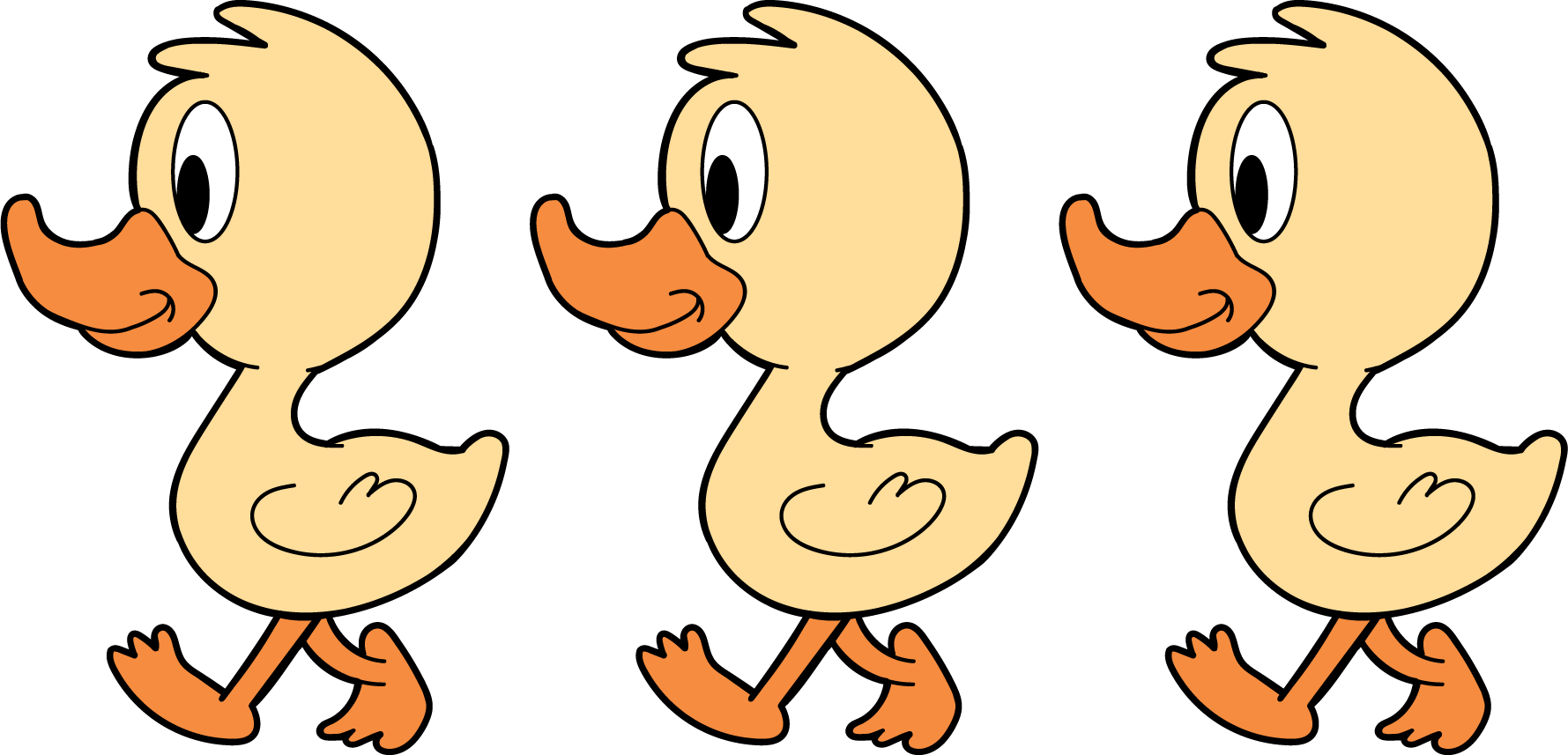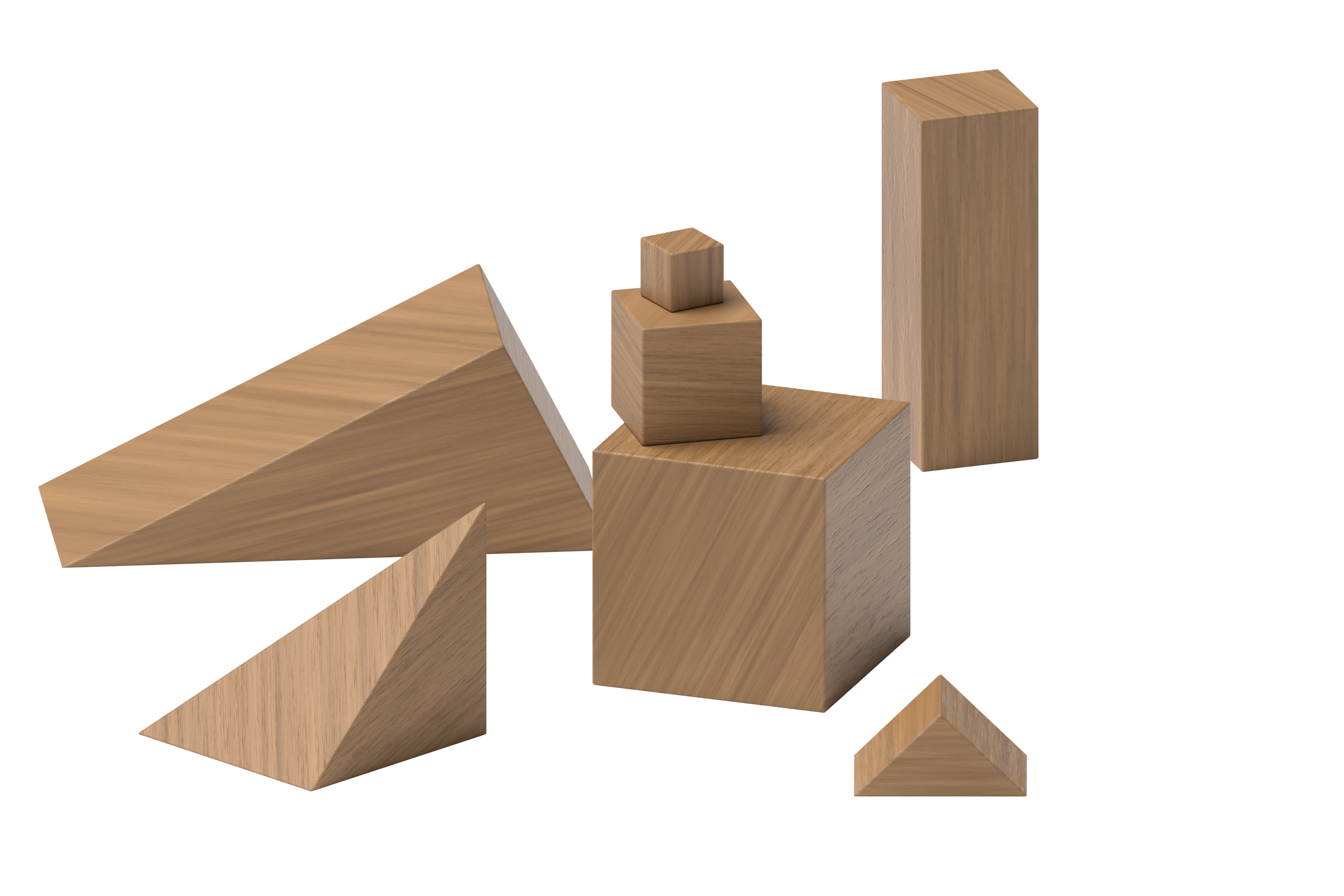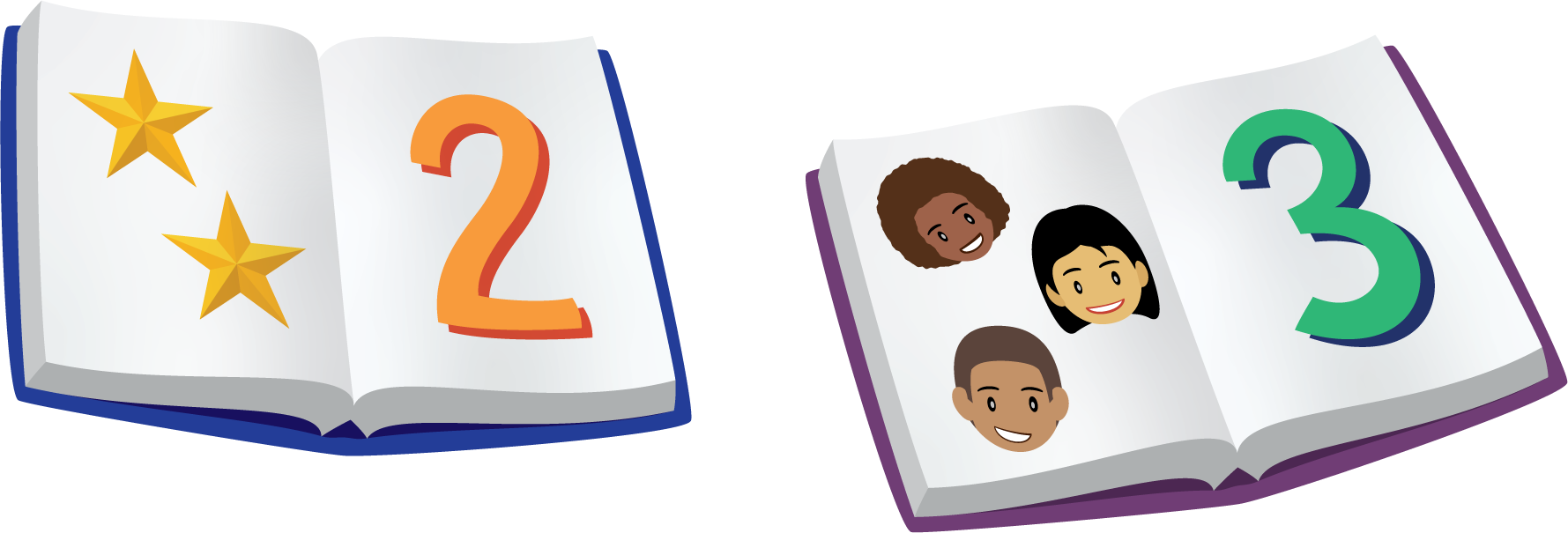Lesson 8
Different Groups, Same Quantity
Warm-up: Act It Out: Another Way (10 minutes)
Narrative
The purpose of this activity is for students to consider different ways of acting out a story. Students revisit the story from previous lessons. They suggest different ways the story could be acted out. Acting out gives students opportunities to make sense of a context (MP1). In the synthesis, the class acts out the story with either concrete objects or drawings, whichever was not done in the previous lesson.
Launch
- Groups of 2
- Display and read the story.
- “What is the story about?”
- 30 seconds: quiet think time
- Share responses.
- Read the story again.
- “How can you act out this story?”
- 30 seconds: quiet think time
Activity
- “Discuss your thinking with your partner.”
- 1 minute: partner discussion
- Monitor for students who suggest using physical objects such as fingers, cubes or students to represent the story, or drawing pictures to represent the story.
- Share responses.
Student Facing

3 little ducks went out one day,
over the hill and far away.
Mother duck said, “Quack, quack, quack.”
Then 3 little ducks came back.
Student Response
For access, consult one of our IM Certified Partners.
Activity Synthesis
- Read the story together.
- Act out the story as a class using either concrete objects or pictures, whichever was not done during the previous lesson.
Activity 1: How Many Do You See: 1, 2, 3 (10 minutes)
Narrative
The purpose of this How Many Do You See is for students to recognize and name small groups of dots and describe how they see them.
Launch
- Groups of 2
- Display the first image.
- “How many do you see? How do you see them?”
- 30 seconds: quiet think time
Activity
- “Use your fingers to show your partner how many dots you see.”
- “Tell your partner how many dots you see and how you see them.”
- 1 minute: partner discussion
- Record responses.
- Repeat with the second image.
Student Facing
How do you see them?



Student Response
For access, consult one of our IM Certified Partners.
Activity Synthesis
- “We’re going to play a game called “Is it 3?” When I show you fingers or dots, think about if it is 3. If it is 3, give a thumbs up. If it is not 3, touch your shoes.”
- Display each image and ask “Is it 3?” each time.
- Display 1 finger, 4 fingers, and 3 fingers and ask “Is it 3?” each time.
Activity 2: Different Groups, Same Quantity (10 minutes)
Narrative
The purpose of this activity is for students to recognize, name, and match groups with the same number of images. They see that the same number of images can be organized in different arrangements. When students say that two cards match because they have the same number of objects, they attend to precision in their language (MP6). While students may count the groups of images on each card, the number of images in each group stays within 4 so that students can subitize and match the quantities without counting.
Advances: Listening, Representing
Supports accessibility for: Visual-Spatial Processing, Organization
Required Materials
Materials to Copy
- Different Groups, Same Quantity
Required Preparation
- Create a set of cards from the blackline master for each group of 2.
Launch
- Groups of 2
- Display the image from the student book.
- “When I point to each group, show your partner with your fingers and tell your partner how many things there are.”
- Point to the ducks.
- 30 seconds: partner work time
- Repeat the steps with the cats and dogs.
- “Which groups have the same number of things? How do you know?” (There are 3 ducks and 3 dogs. They are both 3.)
- 30 seconds: quiet think time
- Share responses.
- Display or write “3”.
- “There are 3 ducks and 3 dogs. They both have the same number of things.”
Activity
- Give each group of students a set of cards.
- “Work with your partner to match the cards that have the same number of things. Explain to your partner how you know.”
- 4 minutes: partner work time
Student Facing

Student Response
For access, consult one of our IM Certified Partners.
Advancing Student Thinking
If students match cards that have different numbers of images, consider asking:
- “Tell me more about how you decided to put this card and this card together.”
- Display a card with 3 images and ask: “How many things are on this card?”. If students answer “3”, ask: “Can you find another card that also has 3 things?”
Activity Synthesis
- Display cards A and E.
- “What is the same about these cards? What is different?” (They both have yellow things. The number is different. There are 4 bananas and 3 stars.)
- Display cards A and G.
- “What is the same about these cards? What is different?” (They both have 4 things. One has bananas and one has umbrellas.)
- Display or write “4”.
- “These cards both have the same number of things. They both have 4.”
Activity 3: Centers: Choice Time (25 minutes)
Narrative
The purpose of this activity is for students to choose from activities that focus on using math tools and recognizing and naming quantities without counting.
Students choose from any stage of previously introduced centers.
- Connecting Cubes
- Pattern Blocks
- Geoblocks
- Picture Books
Required Materials
Materials to Gather
Required Preparation
- Gather materials from:
- Connecting Cubes, Stages 1 and 2
- Pattern Blocks, Stages 1 and 2
- Geoblocks, Stages 1 and 2
- Picture Blocks, Stage 1
Launch
- “Today you will work in centers with our math tools and picture books.”
- Display the center choices in the student book.
- “Think about what you would like to do first.”
- 30 seconds: quiet think time
Activity
- Invite students to work at the center of their choice.
- 10 minutes: center work time
- “Choose what you would like to do next.”
- 10 minutes: center work time
- While students work in centers, ask:
- “What did you do with the connecting cubes, pattern blocks, or geoblocks?”
- “What groups of things did you see in your book? How many things are there?”
Student Facing
Choose a center.
Geoblocks

Connecting Cubes

Pattern Blocks

Picture Books

Activity Synthesis
- Invite previously selected students to share their picture book page.
- “What groups do you see in _____’s picture book page?”
Lesson Synthesis
Lesson Synthesis
“Today we matched groups that had the same number of things.”
Display card C from the second activity.
“Show or tell your partner how many things are on this card.” (Students say “3” or show 3 fingers.)
“What are some groups of things in our classroom that have 3 things?” (There are 3 windows. There are 3 hearts on the bulletin board.)
Cool-down: Unit 1, Section B Checkpoint (0 minutes)
Cool-Down
For access, consult one of our IM Certified Partners.